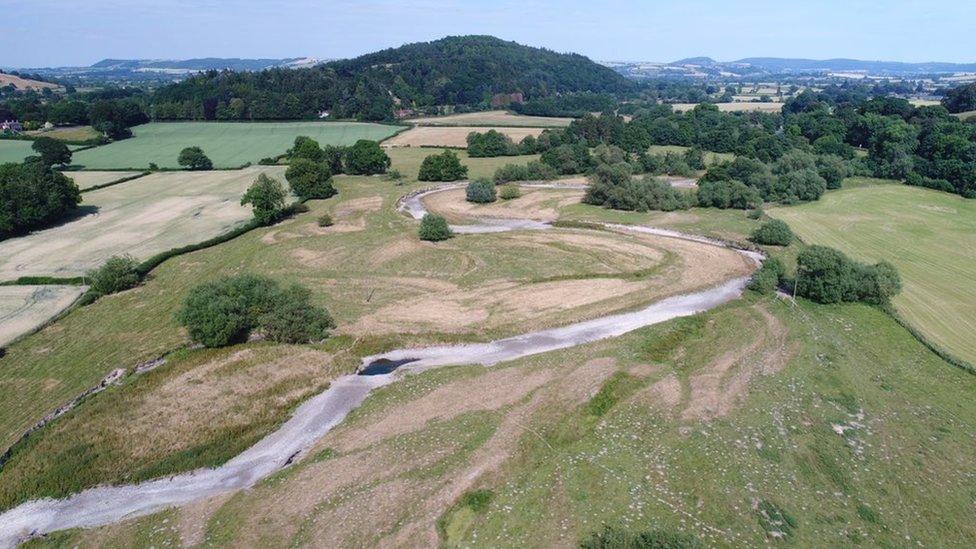Crop marks reveal ancient sites in Wales due to heatwave
- Published
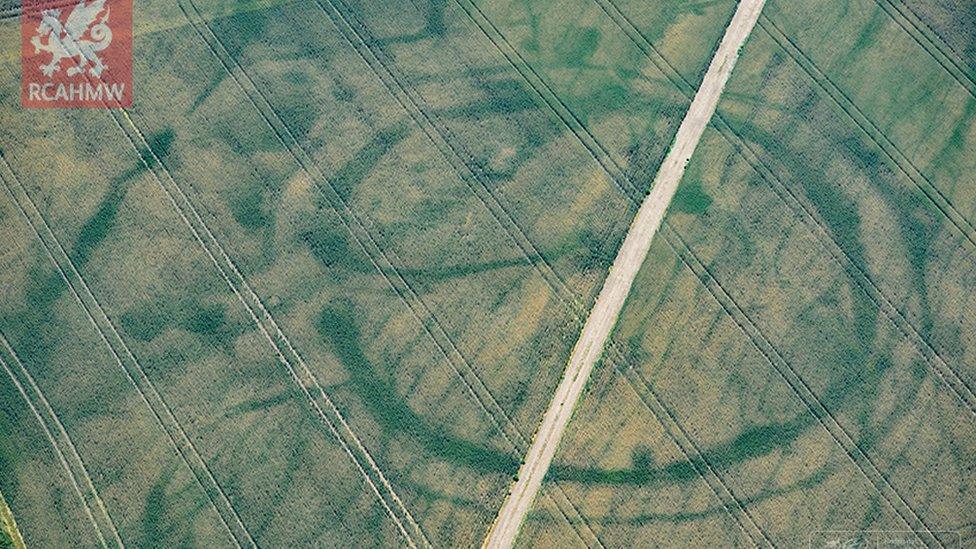
Crop marks of prehistoric enclosure in the Vale of Glamorgan and faint footings of a suspected Roman villa
More "long lost" settlements have been found across Wales as their outlines show as crop marks in the heatwave.
An unknown Celtic site has been discovered in the shadow of a castle ruin near Tywyn, Gwynedd, according to aerial archaeologist Toby Driver.
Prehistoric settlements have also emerged in Monmouthshire along with a suspected Roman fortress.
"All around Wales we are adding in new bits of history," said Mr Driver, who uses a light aircraft to find sites.
"Right across Wales we have got some stunning discoveries.
"It is a strange and exciting thing to see. It has been an incredible three weeks," he told BBC Radio Wales' Good Morning Wales programme.
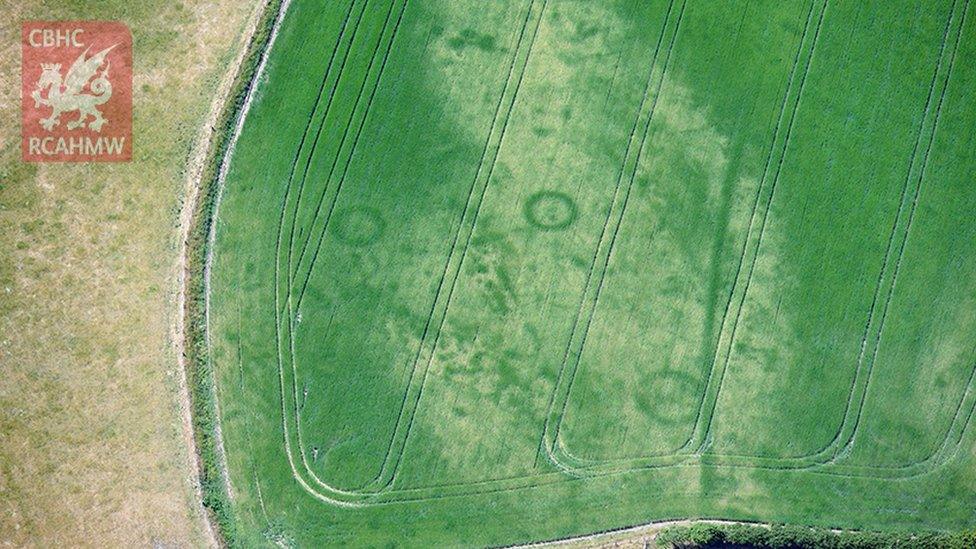
Crop marks of a Bronze Age barrow cemetery on the Llyn Peninsula
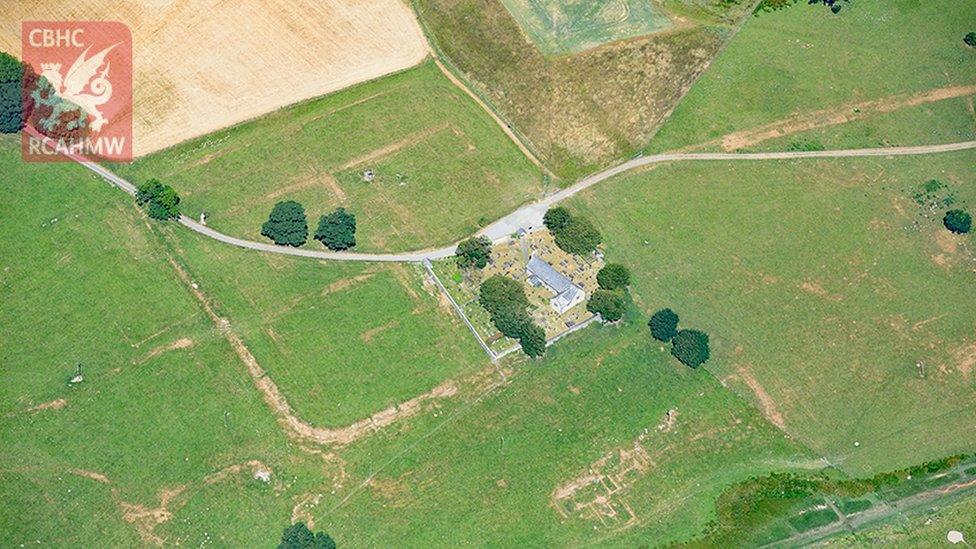
Parch marks of Roman buildings showing at Caerhun Roman fort in Conwy Valley
The Royal Commission on the Ancient and Historical Monuments of Wales (RCAHMW) has released photographs, external from Mr Driver's discoveries following flights from Haverfordwest Airport in Pembrokeshire.
In Gwynedd, an additional Celtic settlement has emerged on the valley floor between the castle ruins of Castell y Bere and hillfort Craig yr Aderyn.
"Nobody knew it was there," said Mr Driver.
He found the outline of a suspected Roman watch tower on the nearby coast.
And in south Wales, a "new" Roman fortress and town between Caerwent and Caerleon has appeared in the dry conditions.
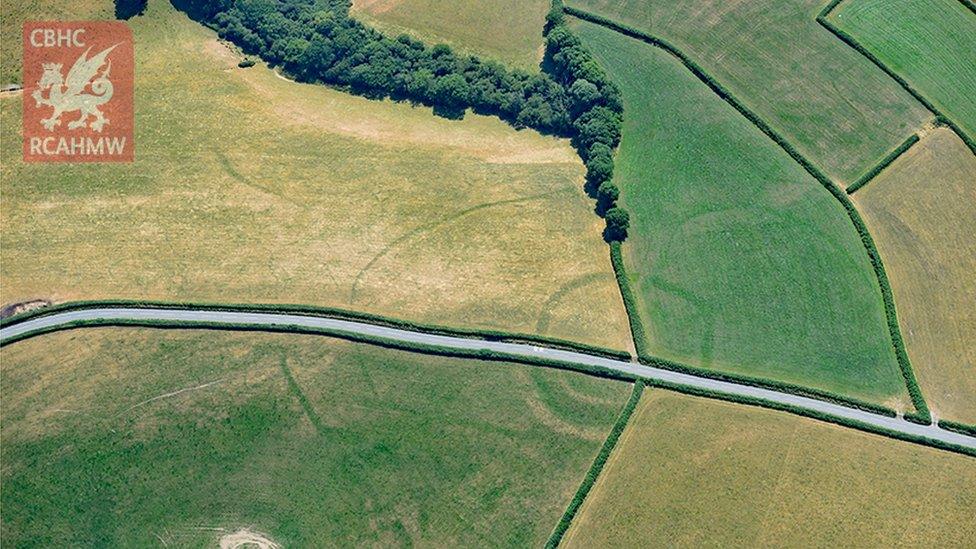
An Iron Age farmstead near Whitland in Carmarthenshire
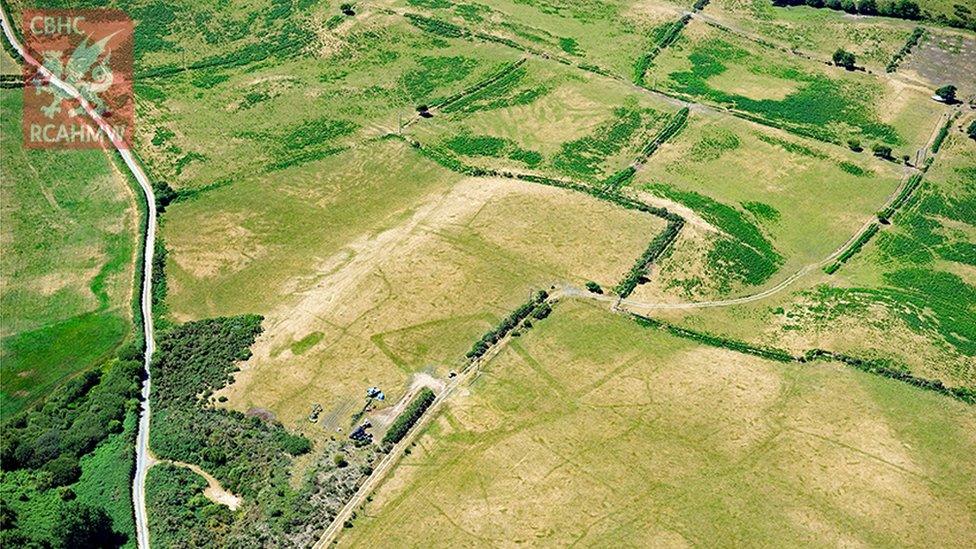
Extensive crop marks of prehistoric enclosures on the Llyn Peninsula
The crop marks are made by vegetation drawing on better nutrients and water supplies trapped in long-gone fortification ditches - leading to lush green growth that stands out.
But they can disappear as quickly as they emerge once the weather conditions change.
Mr Driver said: "I have been doing this job since the late 90s and I've not seen conditions like this across the country.
"This is the time when long lost buried archaeological sites, Roman villas, Roman forts, prehistoric settlements appear fleetingly in crops."
His research is expected to prompt further research on the ground in the months to come.
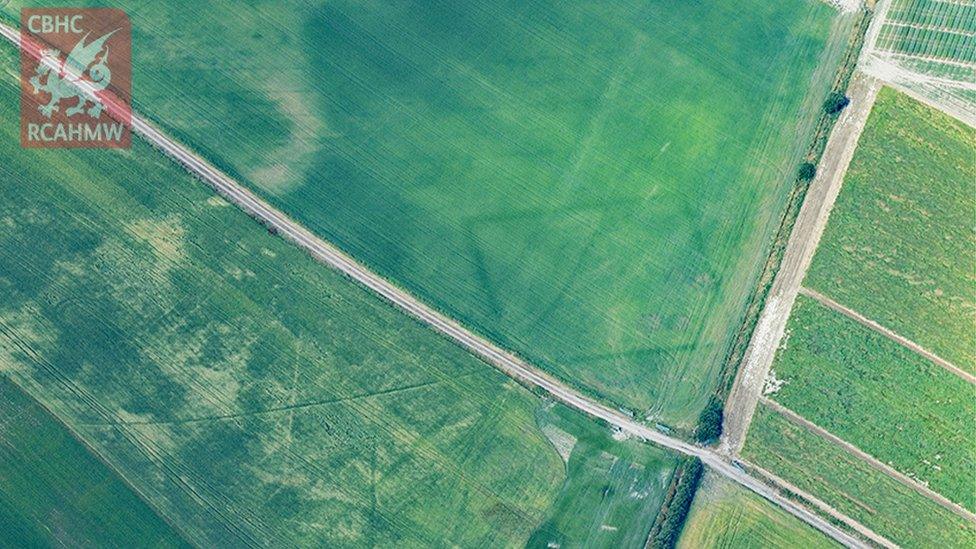
A newly-discovered Iron Age farmstead in coastal Ceredigion
- Published11 July 2018

- Published10 July 2018
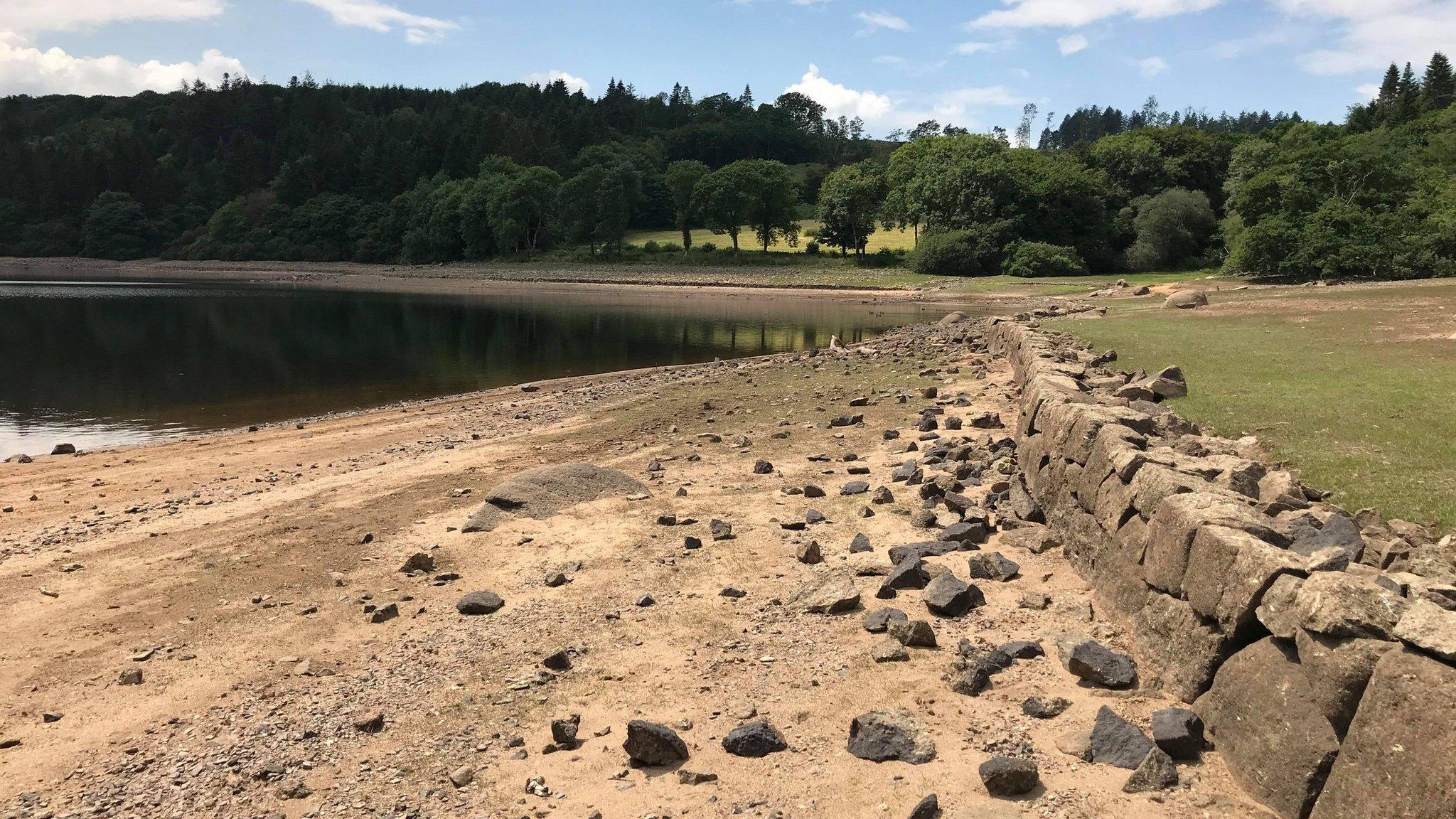
- Published7 July 2018
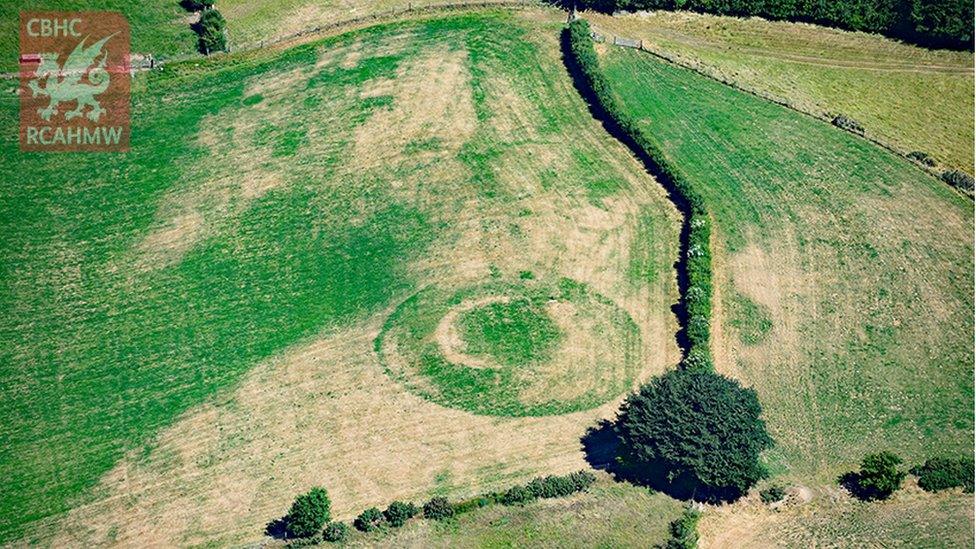
- Published6 July 2018
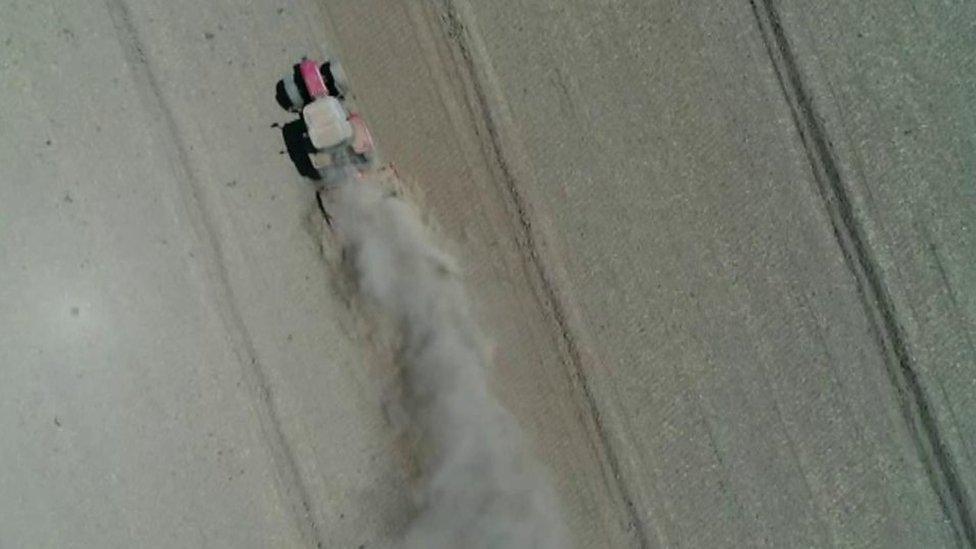
- Published5 July 2018
